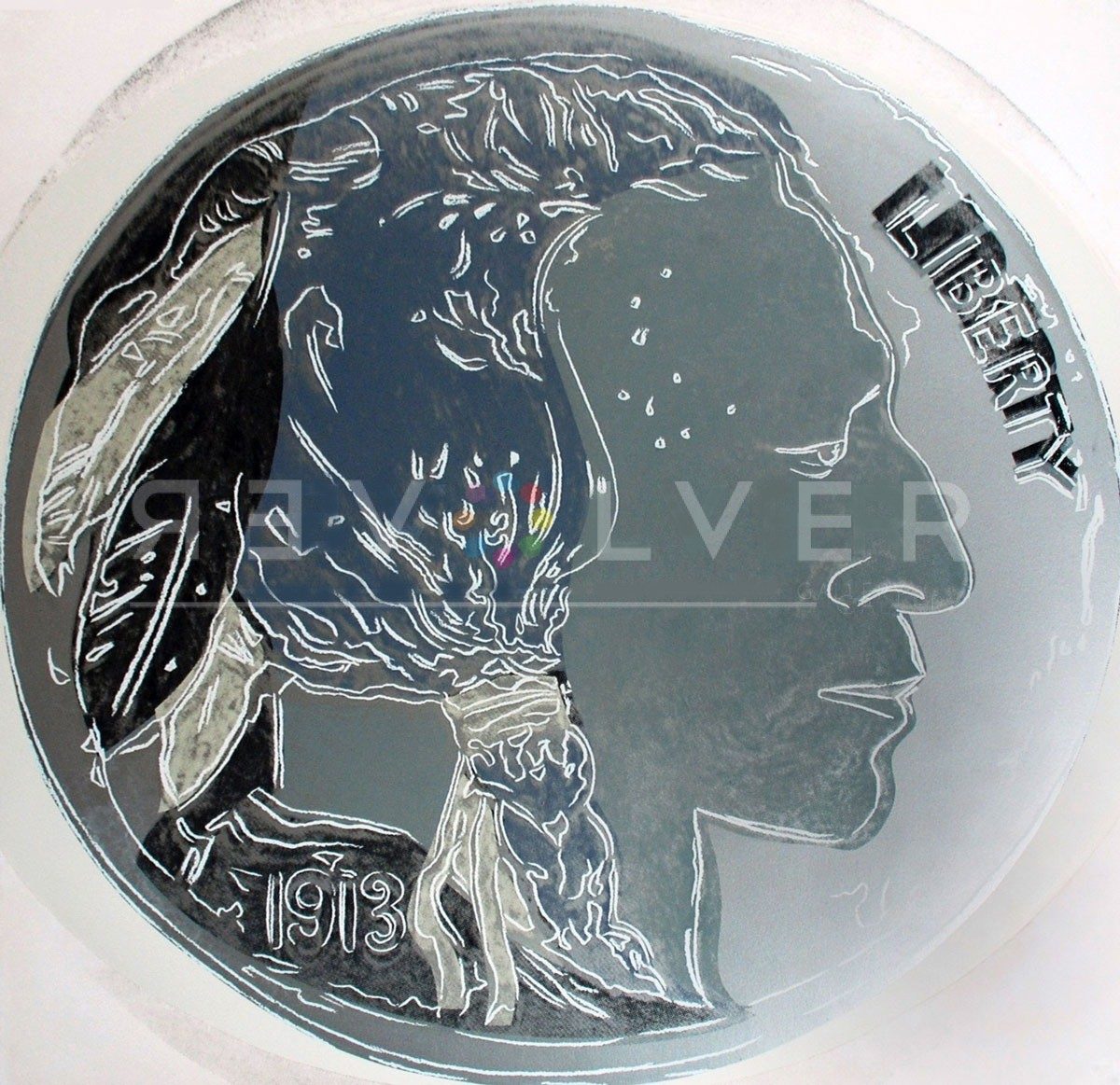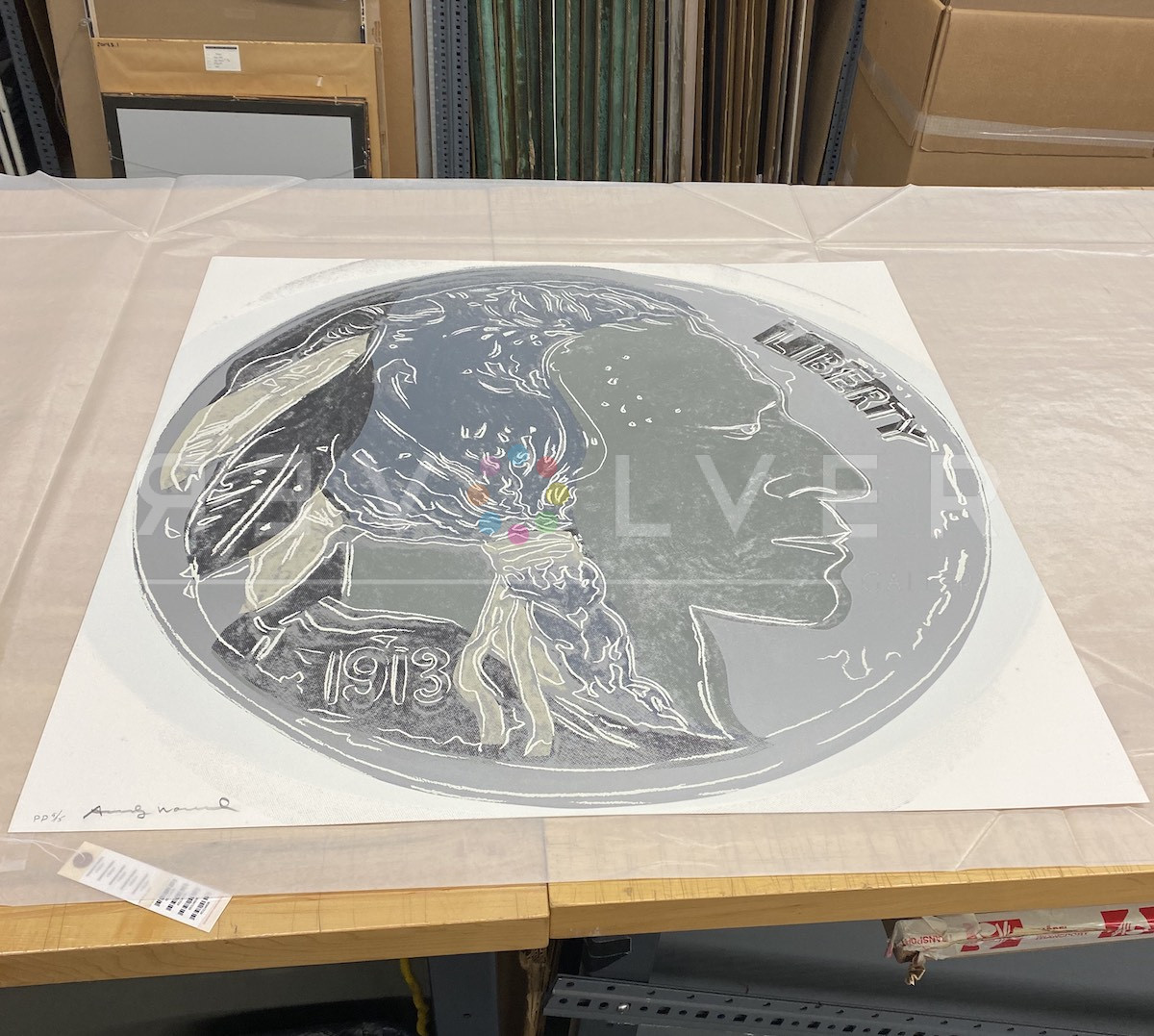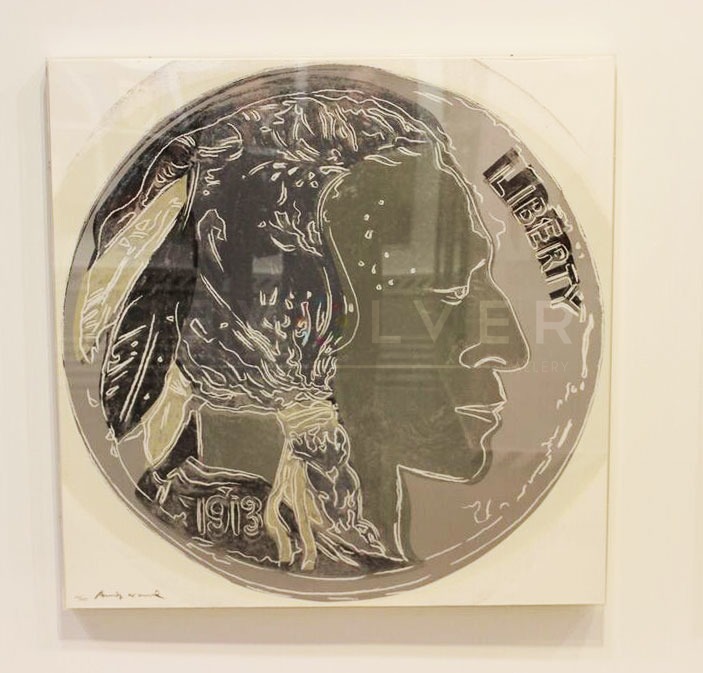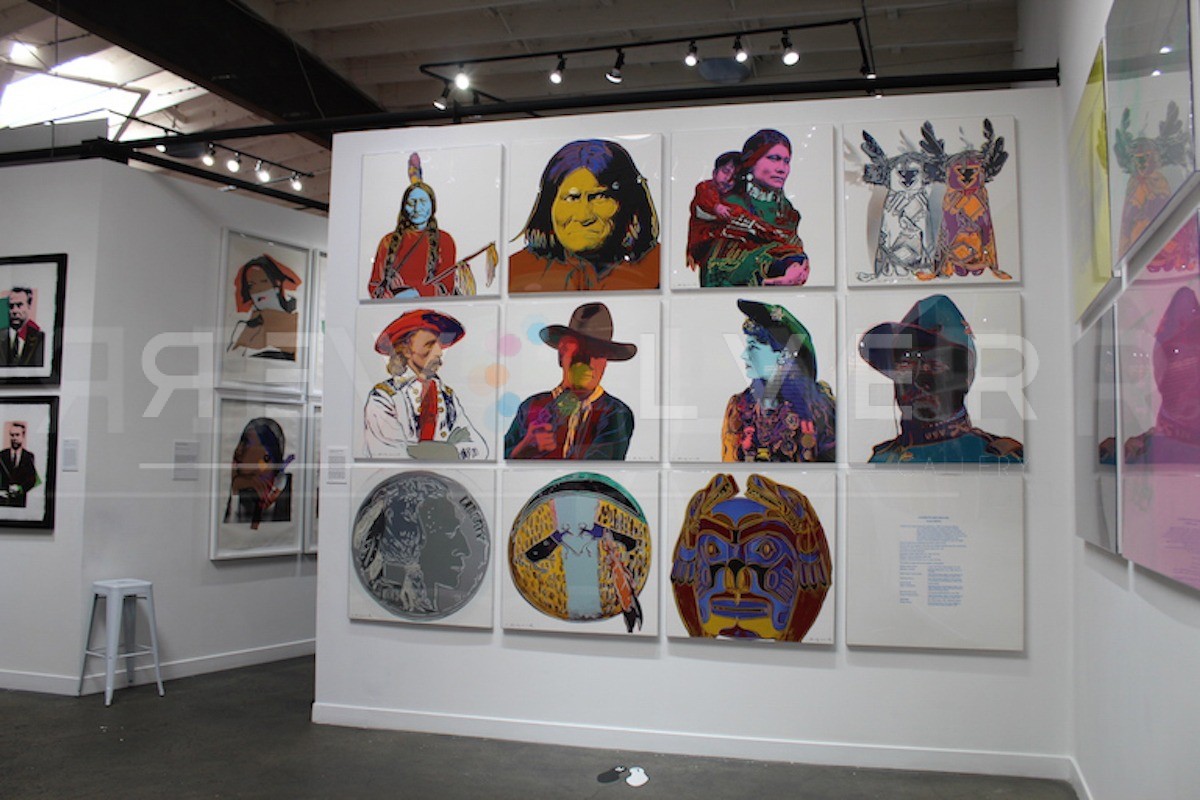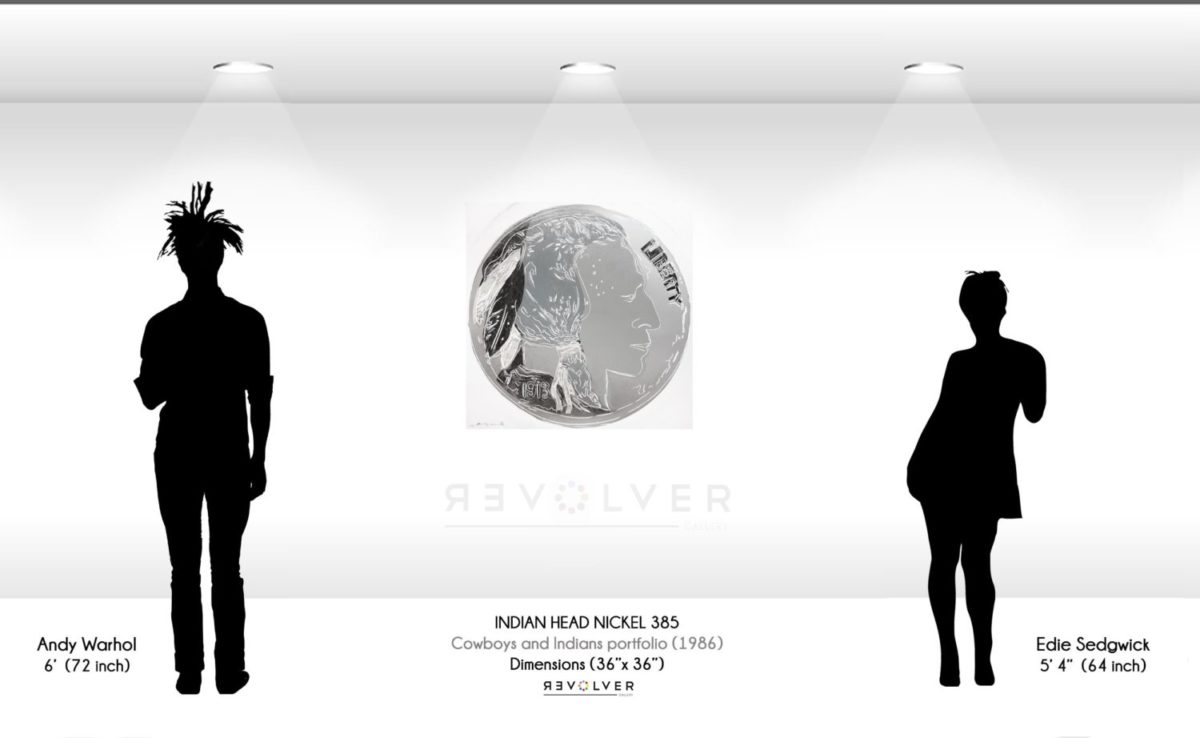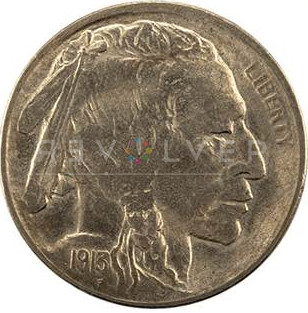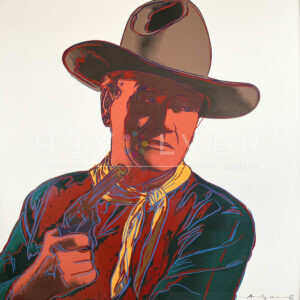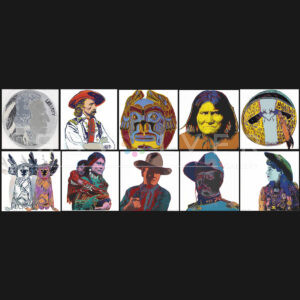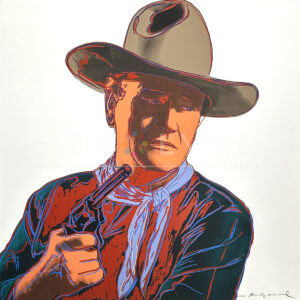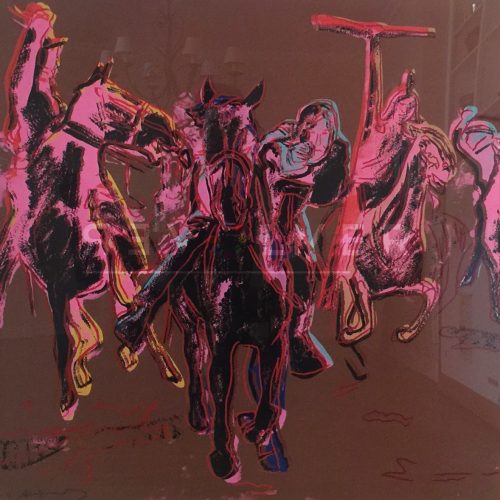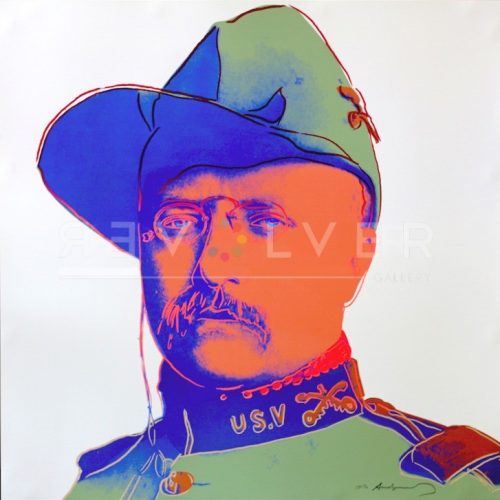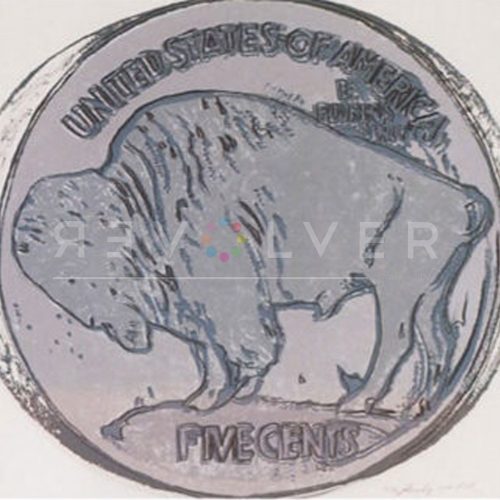Andy Warhol’s 1986 Indian Head Nickel 385 is one of ten screenprints in his Cowboys and Indians portfolio. An additional four trial proofs were excluded from the final suite: War Bonnet Indian 373, Buffalo Nickel 374, Action Picture 375, and Sitting Bull A70.
Warhol grew up in an era dominated by Western films. He was fascinated by 1930s and 40s stars such as the Lone Ranger, Roy Rogers, Hopalong Cassidy, and John Wayne, who is also featured in this portfolio. As an adult, Warhol remained intrigued by the romance of the West that he was so interested in as a child. Western aesthetics are very present in Warhol’s art, and he illustrated an enduring interest in Americana themes with his Myths series, Ads series and his two experimental Western films, Horse (1965) and Lonesome Cowboys (1968).
In the Cowboys and Indians portfolio, Warhol illustrates the conflict between settlers and Native Americans with five prints representing American settlers (“cowboys”) and five prints representing Native Americans. The symmetry of the portfolio presents the West as a battle site and positions each print as a participant in the conflict of the frontier. Warhol presents, essentially, a dramatized version of the West. Warhol does not appear interested in illustrating the frontier with historical accuracy, but instead provides a look at the theatrical West—the one he found in popular culture and media as a child.
Indian Head Nickel 385 is an excellent example of Warhol’s efforts to mirror the ahistorical. In this print, Warhol renders one side of an “Indian head nickel.” This five-cent piece was distributed from 1913 through 1938. Sculptor James Earl Fraser was commissioned by the Taft administration to design the coin. Though Fraser was known for his portraits of Native Americans, the image on the nickel is not based off of any one model, but is a composite of several images of Native Americans. It is controversial in that it illustrates a generic, stereotypical version of a Native American rather than an individual. The backside of the nickel is an image of a buffalo, which Warhol featured in the screen print Buffalo Nickel 374, though it was not included in the final Cowboys and Indians portfolio.
In Indian Head Nickel 385, Warhol illustrates the coin in gray tones with white line work meant to highlight the details of the image that would have been embossed on the physical coin. The head of the Native American man is turned in profile towards the word “LIBERTY,” and the year “1913” is printed over the man’s neck.
With Indian Head Nickel 385, Warhol presents the generalized Native American identity that is visible in popular American culture. By featuring Indian Head Nickel 135 alongside prints of Native American individuals including Sitting Bull (Sitting Bull 376) and Geronimo (Geronimo 384), Warhol urges his audience to consider all the nuance that is lost when generalized perceptions of Native Americans prevail in American media.
Photo credit: 1913 Buffalo Nickel Obverse, photograph by Jaclyn Nash, Smithsonian’s National Numismatic Collection, National Museum of American History.

